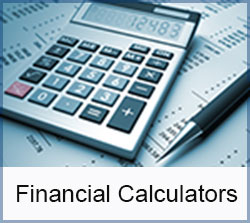The Estate Bond

Growing your estate without undue market risk and taxes
Often we see older investors shift gears near retirement and beyond. Many become risk adverse and move their assets into fixed income type investments. Unfortunately this often results in the assets being exposed to higher rates of income tax and lower rates of return – never a good combination.
Or maybe the older investor cannot fully enjoy their retirement years for fear of spending their children’s inheritance.
The Estate Bond financial planning strategy presents a solution to both of these problems.
How does it work?
- Surplus funds are moved out of the income tax stream and into a tax exempt life insurance policy.
- Each year a specified amount is transferred from tax exposed savings to the life insurance policy
In essence, we are substituting one investment (the life insurance policy) for another (fixed income assets).
The result?
- The cash value in the life insurance policy grows tax-deferred and may also increase the insurance benefits payable at death.
- Since the death benefit of a life insurance policy is received tax-free by the beneficiary this strategy results in a permanent tax shelter.
In other words, there is an increase in the funds available to heirs and beneficiaries after death and a decrease in the taxes payable before death.
The Estate Bond in action
Robert, aged 60, and his wife Sarah, aged 58 are satisfied that they will have sufficient income during their retirement years. They used the Estate Bond concept as a means to guarantee their legacy to their children and grandchildren.
Investment: $30,000 for 20 years into a Joint Second-to-Die Participating Whole Life policy which is guaranteed to be paid up in 20 years
Immediate Death Benefit: $892,078
Death Benefit in 30 years: $2,160,257 (at current dividend scale)
Cash Surrender Value in 30 years: $1,582,934 (at current dividend scale)*
* If surrendered, the cash surrender value would be subject to income tax but there are strategies that could be employed to avoid this tax. Assumes using Participating Whole Life illustrated at current dividend scale. Values shown in 30th year at approximate life expectancy.
Alternative investment in action
Investment: $30,000 for 20 years in a fixed income investment earning 2.5% AFTER tax
Immediate Death Benefit: $30,000
Estate Benefit in 30 years: $1,005,504
It should be noted that obtaining this rate of return in today’s fixed income environment would be challenging.
Additional benefits of the Estate Bond
- The estate value of $2,160,257 in 30 years is not subject to income tax
- The proceeds at death, if paid to a named beneficiary, are not subject to probate fees.
- If the beneficiary is one of the preferred class (spouse, parent, child or grandchild) the cash value and the death proceeds are protected from claims of creditors or litigants during the insured’s life time.
- The use of life insurance with a named beneficiary also results in a totally confidential wealth transfer.
- Robert and his wife can both enjoy their retirement without affecting their family’s inheritance.
The Estate Bond strategy is designed for affluent individuals who are 45 years of age or older and who are in reasonably good health. For those who meet these criteria and have surplus funds to invest, this concept can provide significant benefits and results.
Please call me if you have any questions about the Estate Bond strategy or would like to determine if it is right for you. As always, please feel free to use the social sharing buttons below to forward this article to someone that would find it of interest.


Comments are closed.